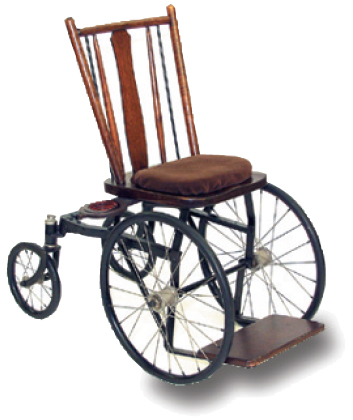The Making of a Politician.
Printed Page 652 Chapter Chronology
The Making of a Politician. Born in 1882, Franklin Delano Roosevelt grew up on his father's leafy estate at Hyde Park on the Hudson River, north of New York City. Roosevelt prepared for a career in politics, hoping to follow in the political footsteps of his fifth cousin, Theodore Roosevelt. Unlike cousin Teddy, Franklin Roosevelt sought his political fortune in the Democratic Party. In 1920, he catapulted to the second spot on the national Democratic ticket as the vice presidential candidate of presidential nominee James M. Cox. Although Cox lost the election (see chapter 22), Roosevelt's energetic campaigning convinced Democratic leaders that he had a bright future.
In the summer of 1921, at the age of thirty-nine, Roosevelt caught polio, which paralyzed both his legs. For the rest of his life, he wore heavy steel braces, and he could walk a few steps only by leaning on another person. Tireless physical therapy helped him regain his vitality and intense desire for high political office, although he carefully avoided being photographed in the wheelchair he used routinely.

After his polio attack, Roosevelt frequented a polio therapy facility at Warm Springs, Georgia. There, he got to know southern Democrats, which helped make him a rare political creature: a New Yorker from the Democratic Party's urban and immigrant wing who got along with whites from the party's entrenched southern wing.
By 1928, Roosevelt had recovered sufficiently to campaign for governor of New York, and he squeaked out a victory. As governor of the nation's most populous state, Roosevelt showcased his activist policies, which became a dress rehearsal for his presidency.
As the Great Depression spread hard times throughout the nation, Governor Roosevelt believed that government should intervene to protect citizens from economic hardships rather than wait for the law of supply and demand to improve the economy. According to the laissez-faire views of many conservatives — especially Republicans, but also numerous Democrats — the depression simply represented market forces separating strong survivors from weak losers. Unlike Roosevelt, conservatives believed that government help for the needy sapped individual initiative and impeded the self-correcting forces of the market by rewarding people for losing the economic struggle to survive. Roosevelt lacked a full-fledged counterargument to these conservative claims, but he sympathized with the plight of poor people. "To these unfortunate citizens," he proclaimed, "aid must be extended by governments, not as a matter of charity but as a matter of social duty. ...[No one should go] unfed, unclothed, or unsheltered."
To his supporters, Roosevelt seemed to be a leader determined to attack the economic crisis without deviating from democracy — unlike the fascist parties gaining strength in Europe — or from capitalism — unlike the Communists in power in the Soviet Union. (See "Beyond America's Borders.") Roosevelt's ideas about how to revive the economy were vague, but his many supporters appreciated his energy and activism. His conviction that government should do something to help Americans climb out of the economic abyss propelled him into the front ranks of the national Democratic Party.